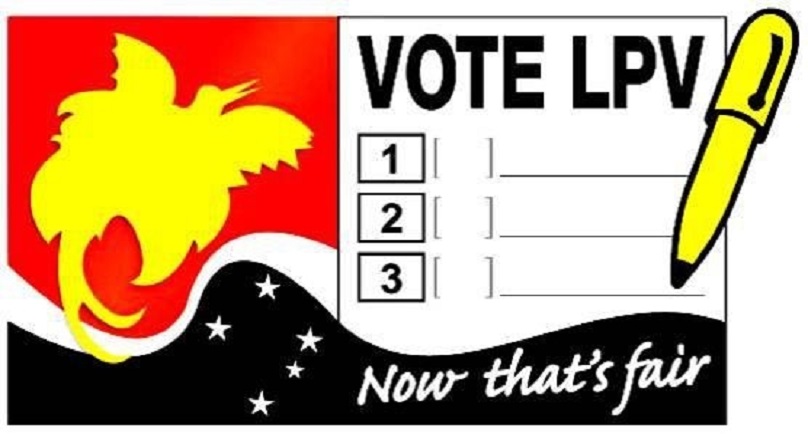Image Source: PNG Electoral Commission
Limited Preferential Voting or LPV is a voting system that became effective in the 2007 General Elections after the Papua New Guinea Government passed law reforms in the Organic Law on the National and Local Level Elections.
The LPV system allows three choices for the voter. The law requires that under LPV, the winning candidate must get 50 per cent + 1 of the formal votes cast in the electorate.
Understanding the counting rules will also assist in understanding how a winner is determined and help you cast your vote wisely.
In the LPV system there are two distinct parts to counting votes. The primary count is the first part. This refers to the 1st preference vote or vote 1 that is counted first. At the end of the primary count, they must determine if a candidate has received 50 per cent + 1 of the first preference votes to be declared the winner.
If a candidate receives 50 per cent + 1 of the first preference votes than the candidate is declared the winner and no further counting is needed.
If a candidate does not secure 50 per cent + 1 formal votes then they go into the second part of the counting. This is the elimination part where according to the law the candidate with the lowest number of 1st preference votes must be eliminated; and the votes that he or she received will be redistributed to the remaining candidates according to the 2nd and 3rd preference votes.
After the first elimination and the redistribution of the votes of the excluded candidate, they will then determine if the redistributed votes have given a candidate 50 per cent + 1 of the formal votes. If not, the candidate with the lowest number of votes is again eliminated and his or her votes are redistributed to the remaining candidates according to the 2nd and 3rd preferences.
This process continues until a winner is found and under this system a winner is always found.
However, some votes will run out of preferences, and are called exhausted votes.
As more candidates are eliminated the chances increase for more exhausted votes. And as more votes become exhausted the ‘live’ formal votes remaining decrease.
Understanding how the LPV counting works brings to light a number of things.
Firstly, we understand the importance of 1st preference vote. That it is possible for a candidate to win with 1st preference votes only.
However, this is highly unlikely (except for the case of Peter O’Neill who won with 1st preference votes only in the 2012 General Elections) therefore, 2nd and 3rd preference votes are critical to determine who wins.
But in order for a candidate to stay in the running they need the 1st preference votes as it is the primary vote.
All in all, 2nd and 3rd preference votes are as important as the 1st preference votes. 1st preference votes get you in the running and 2nd and 3rd preference votes determine your win.


